Rustic and Casual

Casual cottage gardens play host to everything from afternoon naps on a hammock to lantern-lit dinners. Inviting front gardens with loosely designed flower beds and rambling paths can channel a rustic charm that extends to the backyard entertaining area. Whether you’re looking for showstopping color or something a little more muted to blend in as a backdrop, its important to choose the right plants. To bridge the barrier between outdoors and in, we’ve chosen plants worth your while.
Hollyhocks
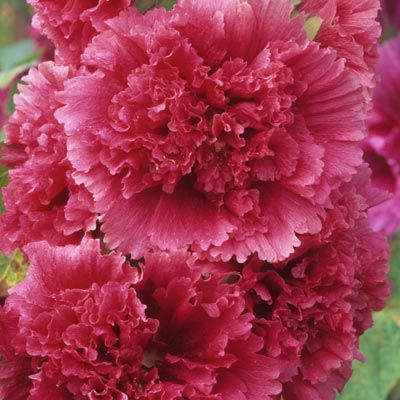
(Alcea rosea)
Butterflies and hummingbirds flock to this old-fashioned favorite, which is well suited for growing along walls and fences. Tall, sturdy stems support purple, pink, white, or yellow flowers. ‘Chater’s Double Hybrid’ bears double flowers from early to midsummer, in shades of red, apricot, and yellow against rounded, light-green leaves.
Grows 6 to 8 feet tall and 18 to 24 inches wide in USDA Hardiness Zones 3 to 9; full sun.
Hydrangea
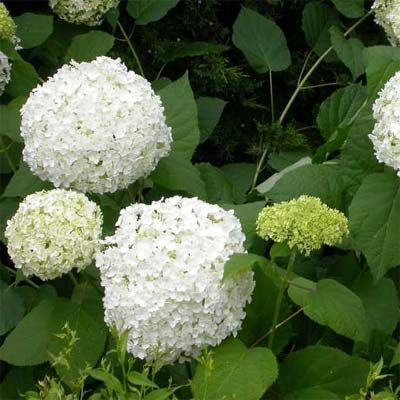
(Hydrangea aborescens)
Known for its dazzling flower heads that can reach 6 inches wide, this species was voted one of the 75 greatest plants for gardens by the American Horticultural Society. ‘Annabelle’ bears massive 12-inch-diameter rounded clusters of white flowers over medium green, pointed leaves; blooms from June to September.
Grows 3 to 5 feet tall and 4 to 6 feet wide in USDA Hardiness Zones 4 to 9; partial shade.
Catmint
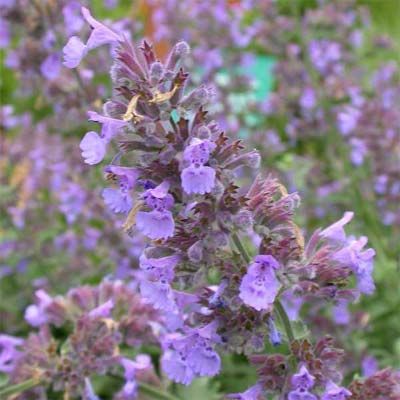
(Nepeta racemosa)
It’s noted for its appeal to cats, but this low-maintenance plant has a more practical use—it repels mosquitoes. Aromatic gray-green leaves are set against two-lipped flowers in violet to lilac blue. Easy-to-grow ‘Walker’s Low’ is drought resistant and tolerates rocky soil, producing trumpet-shaped, deep violet and lilac-blue flowers from April to September.
Grows 24 to 30 inches tall and 30 to 36 inches wide in USDA Hardiness Zones 4 to 8; sun to part shade.
Sage
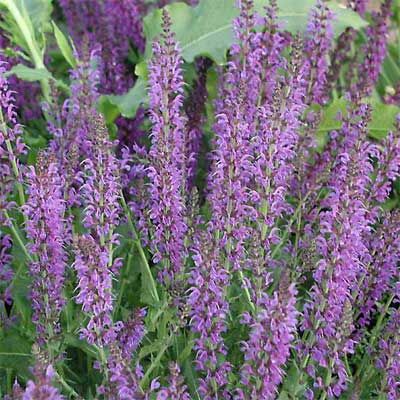
(Salvia x sylvestris)
S. Sylvestris is a hybrid with half-inch-long pinkish flowers that form a thick clump atop rigid stems with scalloped leaves. ‘Mainacht,’ also called ‘May Night,’ has dense shoots of deep purple flowers that tower high above foliage from May to June and work well with pink-flowering plants.
Grows 18 to 24 inches tall and 12 to 18 inches wide in USDA Hardiness Zones 5 to 9; full sun.
Coneflower
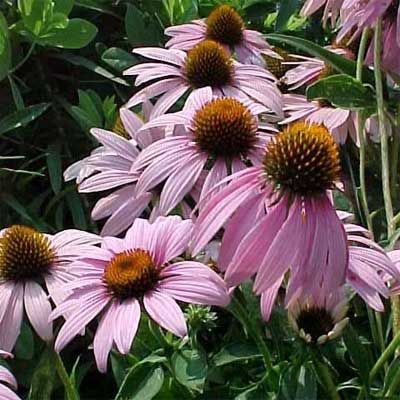
(Echinacea purpurea)
During the summer months, the stems bear purplish flowers with daisy-like, droopy petals; but come winter, its stiff, cone-like center attracts a wide range of birds. ‘Bright Star,’ also known as ‘Leuchstern,’ is one of the faster-growing cultivars with bright rose to lavender-pink blooms up to 12 inches wide from June to August.
Grows 30 to 48 inches tall and 12 to 18 inches wide in USDA Hardiness Zones 3 to 9; full sun to partial shade.
Garden Phlox
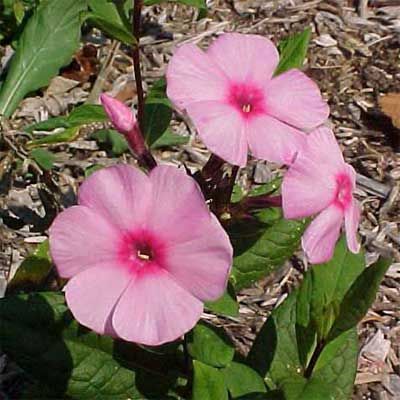
(Phlox paniculata)
Despite its 4-foot height, this fast-growing perennial rarely needs staking to support the fragrant 1-inch-wide white or pale- to dark-lilac flowers. For a particularly long growing season choose ‘Eva Cullum,’ a slightly shorter cultivar with fragrant pink flowers and slightly darker centers over green leaves in pyramidal clusters from July to September.
Grows 24 to 30 inches tall and wide in USDA Hardiness Zones 4 to 8; full sun to partial shade.
Bleeding Heart
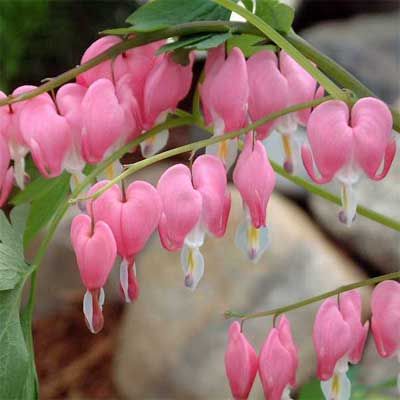
(Lamprocapnos spectabilis)
Whimsical bleeding heart is an elaborate, old-time species that stands out among shade-loving plants. Named after the heart-shaped pink flowers fringed with white petals, which dangle from its arching stems and soft-green foliage in late spring and early summer.
Grows 24 to 36 inches tall and 18 to 30 inches wide in USDA Hardiness Zones 3 to 9; part to full shade.
Delphinium
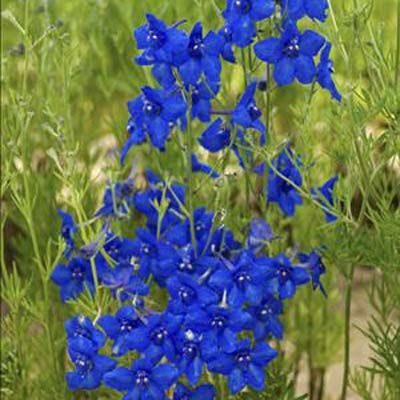
(Delphinium grandiflorum)
Though short-lived, blooming only from June to July, when D. grandiflorum comes around it puts on a display of rich blue, violet, or white flowers on stalks up to 20 inches high, perfect for plush borders or edging. Unlike many cultivars of this species, dwarf ‘Summer Nights’ sits lower to the ground and flowers from early to late summer with indigo-blue flowers on lacy mid-green foliage.
Grows up to 10 to 12 inches tall and wide in USDA Hardiness Zones 3 to 8; full sun to partial shade.
Sundrops
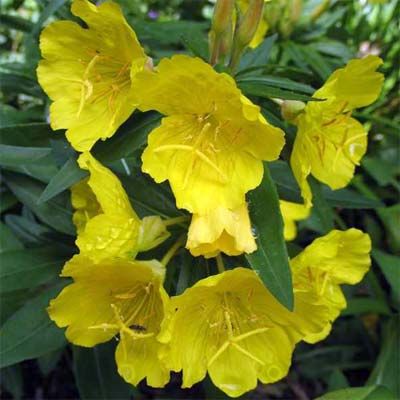
(Oenothera fruticosa)
A member of the late-evening-blooming primrose family, sundrops has yellow, cup-shaped flowers up to 2 inches wide that open during the day from late spring deep into summer. For an interesting display of contrasting colors choose ‘Fyrverkeri,’ also known as ‘Fireworks,’ which bears bright-yellow saucer-shaped flowers from red buds over reddish stems and green to purplish foliage.
Grows 12 to 18 inches tall and 12 to 24 inches wide in USDA Hardiness Zones 4 to 8; full sun.
Lady’s Mantle

(Alchemilla mollis)
Great for groundcover because of its 6-inch-long light-green leaves, this clump-forming species also produces tiny star-shaped bunches of chartreuse flowers from early summer to early autumn. The lobed leaves retain showy moisture beads after a rainy day.
Grows 12 to 18 inches tall and 18 to 30 inches wide in USDA Hardiness Zones 4 to 7; full sun to partial shade.
Peony
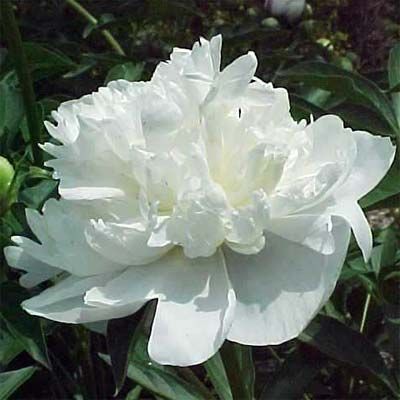
(Paeonia lactiflora)
Synonymous with cottage-garden design, peonies are old-fashioned plants with big, impressive blooms and a wide range of color options. P. lactiflora has splashed of red on the stems and single cup-shaped white to pale-pink flowers up to 4 inches in diameter. ‘Duchesse de Nemours’ flowers for about 10 days in May and June, but after the creamy-white double flowers fall away, the dark-green foliage remains attractive through early fall.
Grows 30 to 36 inches tall and wide in USDA Hardiness Zones 3 to 8; full sun or part shade.
Shasta Daisy
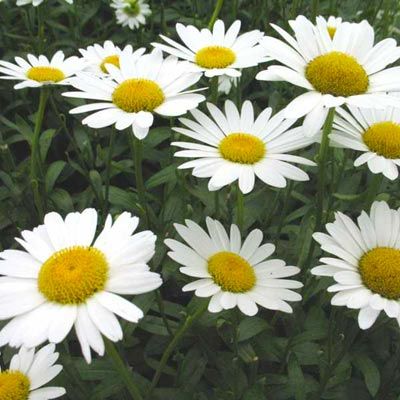
(Leucanthemum x superbum)
No staking is required for the 36-inch-tall, rigid stems that bear these coarse yellow disks rimmed with vibrant white petals. For color from July to September try ‘Becky,’ which grows taller than other cultivars but has slightly smaller 3- to 4-inch flower heads over medium-green lance-shaped leaves.
Grows 3 to 4 feet tall and 2 to 3 feet wide in USDA Hardiness Zones 5 to 9; full sun.
Sweet Pepperbush
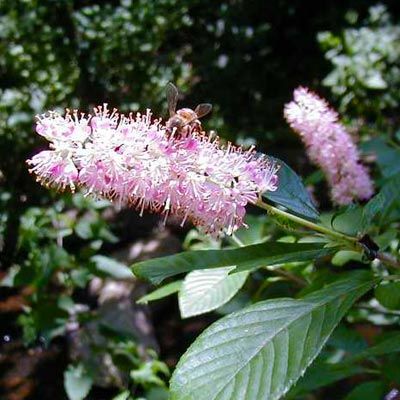
(Clethra alnifolia)
The late-summer-blooming C. alnifolia shrub bears fragrant, bell-shaped white flowers unti early September, with leaves turning an attractive yellow in fall. ‘Ruby Spice’ is a great cultivar with fragrant pink flowers shaped like a bottlebrush and serrated, waxy green leaves; tolerates moist soil—perfect for poorly draining areas.
Grows 4 to 6 feet tall and 3 to 5 feet wide in USDA Hardiness Zones 4 to 8; sun to part shade.
Foxglove
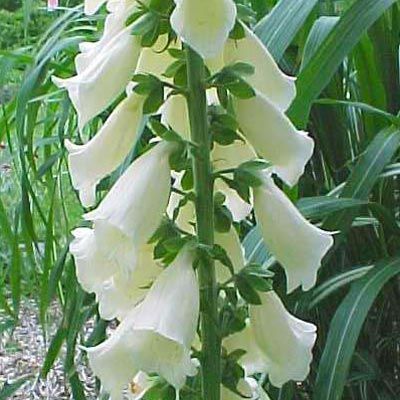
(Digitalis purpurea)
Another old-time garden favorite that resembles gloves with the fingers snipped off. D. purpurea’s tall stalks in early summer of 2½- to 3-inch-long purple, pink, or white flowers are puckered at the ends and have hairy foliage that can be dark green or white-wooly.
Grows 3 to 6 feet tall and 1 to 2 feet wide in USDA Hardiness Zones 4 to 8; full sun to part shade.
Snapdragon
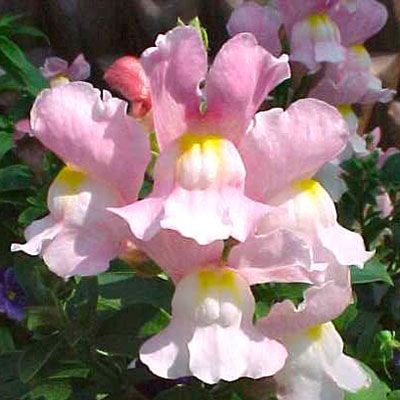
(Antirrhinum majus)
This oldie bears spikes filled with fragrant two-lipped flowers ranging in color from yellows and whites to purples and pinks. Often grown as an annual, snapdragons prefer cooler growing conditions, where they’ll produce an abundance of glossy green leaves and richly shaded or bicolored blossoms from April through the first frost. A. majus’s cultivars range from taller plants to fill in mixed borders to intermediate ones for bedding to dwarfs for containers or edging.
Grows 12 to 72 inches tall and 6 to 24 inches wide in USDA Hardiness Zones 9 to 11; full sun.
Coral Bells
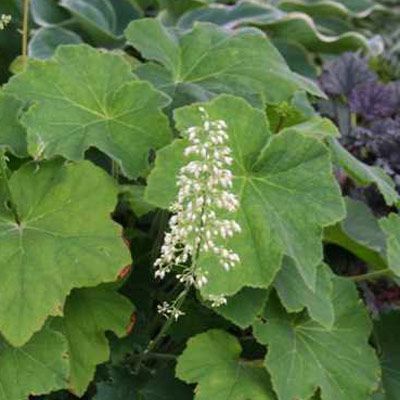
(Heuchera villosa)
Native to the rocky slopes of the Appalachian mountains, this species makes for great edging along walkways. The 3½- to 18-inch-long panicles usually have white flowers tipped with green and broad, lance shape petals. ‘Autumn Bride’ has especially toothy light-green leaves grow in soft triangles amid white blooms from August to September.
Grows 18 to 36 inches tall and 18 to 24 inches wide in USDA Hardiness Zones 3 to 8; part shade to full sun.
Bee Balm
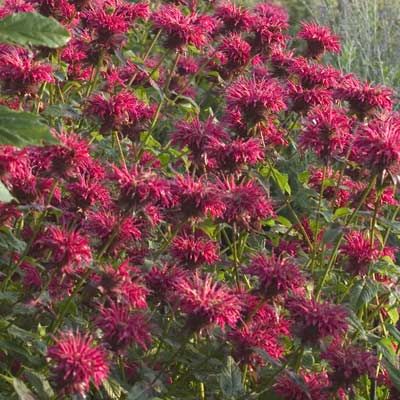
(Monarda didyma)
Ovate, mid-green leaves grow up to 5½ inches long on square stems to showcase a flower with single or double whorls of pink or red petals. ‘Raspberry Wine’ has flower buds shaped like summer berries, with blooms that resemble spiky purple-red tubes from early summer to early fall.
Grows 32 to 42 inches tall and wide in USDA Hardiness Zones 4 to 9; full sun to part shade.
Mock Orange
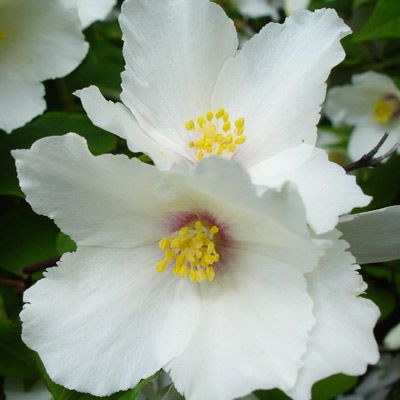
(Philadelphus ‘Belle Etoile’)
Nicknamed for its resemblance to orange blossoms, ‘Belle Etoile,’ a flowering shrub, has cupped, very fragrant white flowers with blotchy, pale-purple centers. They grow singularly on stems or as clusters of three to five and are paired with tapered, narrow leaves from May to June.
Grows 5 to 6 feet tall and 3 to 4 feet wide in USDA Hardiness Zones 5 to 8; full sun to part shade.
Rose of Sharon
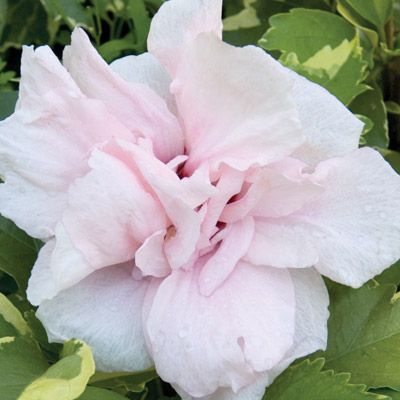
(Hibiscus syriacus)
A cottage-garden favorite, this species is a shrub covered in large, trumpet-shaped dark-pink flowers and toothy dark-green leaves from June to October. ‘Sugar Tip,’ sometimes also called ‘American Irene Scott,’ bears light-pink double flowers and uniquely streaked white-and-blue-green foliage in a cultivar that holds up well to humidity, drought, and poor soil.
Grows 8 to 12 feet high and 4 to 6 feet wide in USDA Hardiness Zones 5 to 8; full sun to part shade.
Large Coneflower
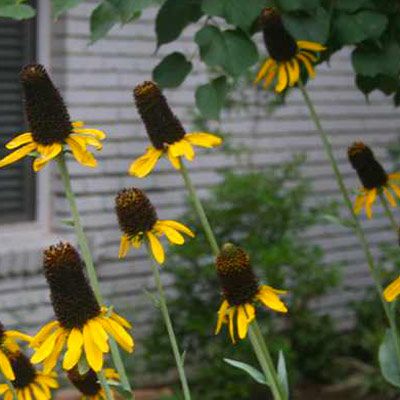
(Rudbeckia maxima)
Petals are often the focal point of a great flower, but R. maxima is known for its towering dark-brown central cones that measure from 2 to 6 inches high. The cylindrical-shaped centers are rimmed with slightly droopy yellow petals and sit above cupped gray-green leaves. Blooms from June to July.
Grows 5 to 6 feet tall and 3 to 4 feet wide in USDA Hardiness Zones 4 to 8; full sun.
Tickseed
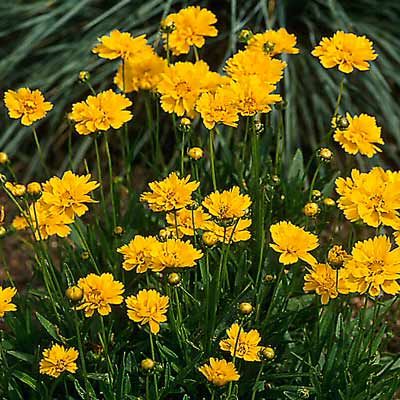
(Coreopsis grandiflora)
Often grown as an annual, the hairless stems on this species let the flower take center stage. The 3- to 5-inch-diameter gold to yellow flowers bloom from late spring to late summer. Rich-yellow ‘Early Sunrise’ has semi-double flowers with splotchy orange-yellow centers from May to August.
Grows 18 to 24 inches tall and wide in USDA Hardiness Zones 4 to 9; full sun.
Siberian Iris

(Iris sibirica)
Deliciously blue-violet petals paired with medium-green grasslike foliage. Groups of up to five flowers blossom in early spring to early summer. Easy-to-maintain ‘Strawberry Fair’ features large, ruffled magenta blooms with variegated centers in shades of blue and white that will awe.
Grows 20 to 28 inches tall and 18 to 24 inches wide in USDA Hardiness Zones 3 to 9; full sun to part shade.
Goatsbeard
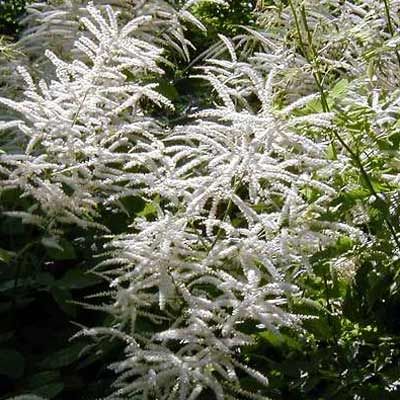
(Aruncus dioicus)
Goatsbeard’s rich green fern-like foliage bursts with tiny clustered flowers in pale creams, yellows, and greens. The 20-inch-long flower clusters bloom from early to midsummer and can resemble astilbe.
Grows 4 to 6 feet tall and 2 to 4 feet wide in USDA Hardiness Zones 3 to 7; full sun to part shade.
True Geranium
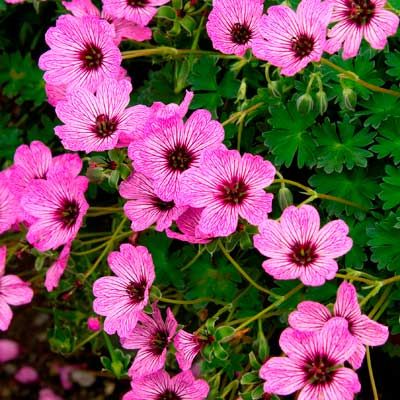
(Geranium cinereum)
A dwarf variety of the cranesbill geranium is an evergreen with gray-green leaves and translucent, cup-shaped white or pink flowers in late spring to early summer. ‘Ballerina’ has darker, grayer leaves than the species, with flowers that range from purple to red with dark veining.
Grows 6 to 8 inches high and 12 to 15 inches wide in USDA Hardiness Zones 5 to 9; full to partial sun.
‘Miss Kim’ Lilac
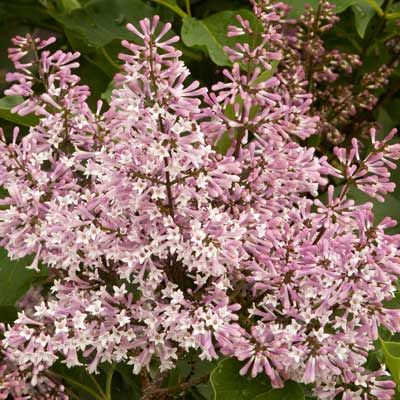
(Syringa pubescens subsp. patula ‘Miss Kim’)
This mound-forming shrub has spikes filled with sweet-smelling, pale-lilac-blue flowers in May, with dark-green foliage that often turns purple in fall.
Grows 4 to 9 feet tall and 5 to 7 feet wide in USDA Hardiness Zones 3 to 8; full sun.
‘Joseph’s Coat’ Rose
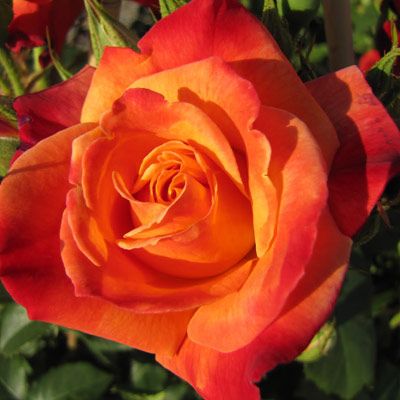
(Rosa ‘Joseph’s Coat’)
Roses, in nearly any form, are the backbone of an informal cottage garden. ‘Joseph’s Coat’ is a vigorous climbing or shrub rose with bunches of cupped yellow flowers that age to orange and pink after blooming from spring to fall.
Grows 8 to 12 feet tall and 5 to 8 feet wide in USDA Hardiness Zones 6 to 9; full sun.
‘Climbing Cecile Brunner’ Rose
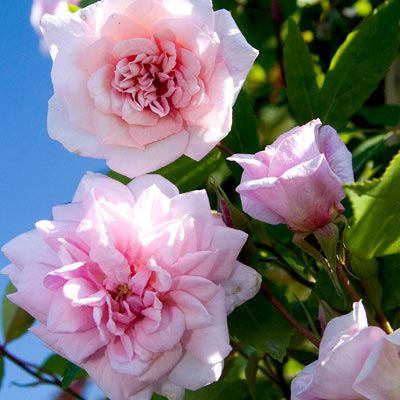
(Rosa ‘Climbing Cecile Brunner’)
A strong grower with lance-shaped, dark-green leaves. Starting in early summer, it bears groupings of fragrant, soft light-pink flowers.
Grows 8 to 20 feet tall and 3 to 6 feet wide in USDA Hardiness Zones 5 to 9; full sun to part shade.
